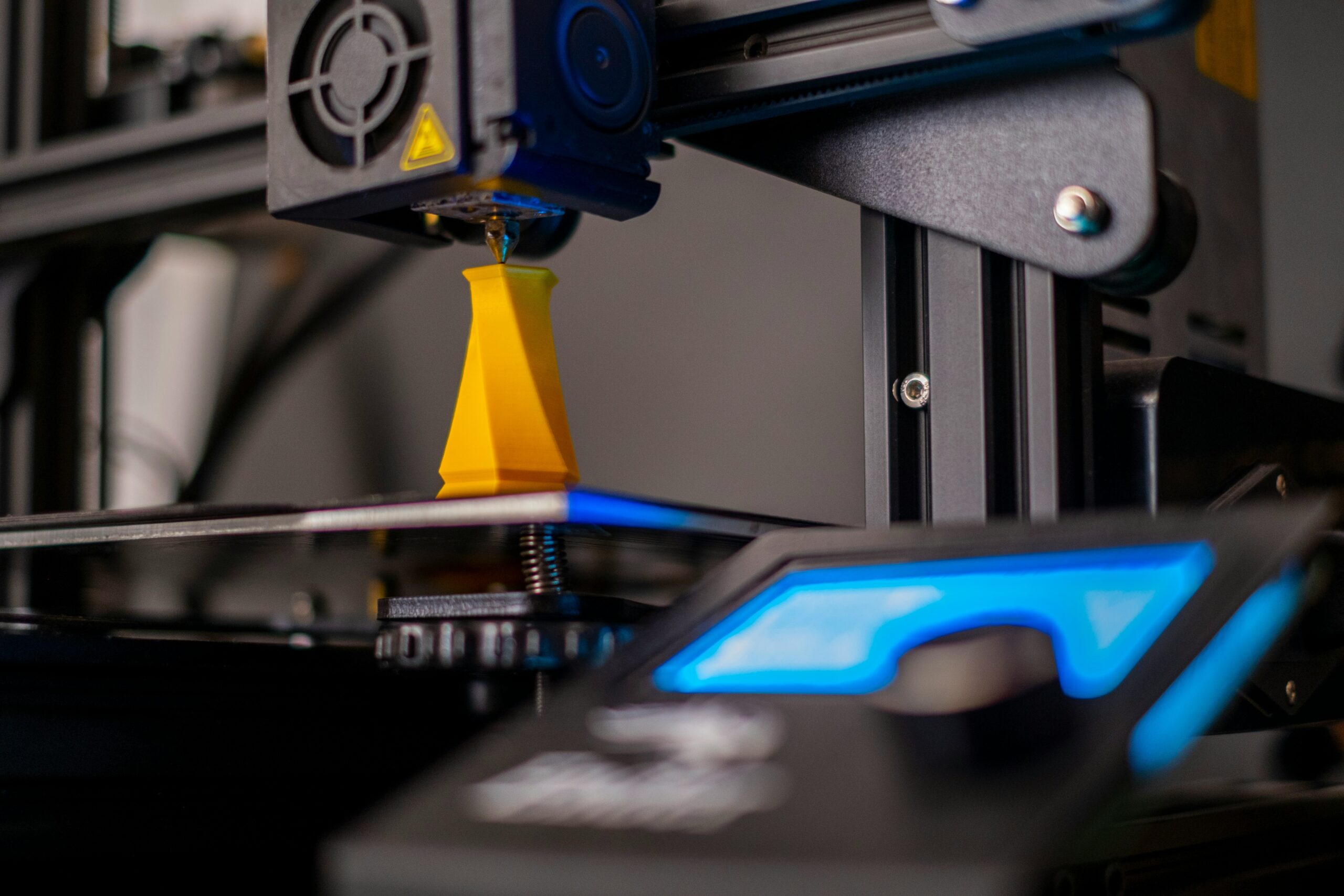3D printing has revolutionized manufacturing, allowing the creation of complex objects directly from digital models. Among the various 3D printing methods, resin 3D printing stands out for its accuracy and quality. This guide explores everything you need to know about resin 3D printing, from its basics to its advantages over other types of 3D printing.
What is Resin 3D Printing?
Resin 3D printing, also known as stereolithography (SLA) or digital light processing (DLP), is an additive manufacturing technique that uses photosensitive liquid resin and a light source to create solid objects with high precision and detail. uses This method is known for producing objects with smooth surfaces and intricate details, making it ideal for applications where fine resolution is critical.
Basic principles
The basic principle of resin 3D printing involves curing liquid photopolymer resin layer by layer using ultraviolet (UV) light. The process begins with a 3D model, which is sliced into thin horizontal layers using specialized software. Each layer is then selectively cured and solidified by a UV light source, creating the object from the bottom up.
Table of Contents
Key Features of Resin 3D Printing
1. High resolution and precision
Resin 3D printers are capable of achieving great detail and precision, often down to microns. This makes them suitable for applications that require complex designs and fine properties, such as jewelery, dental models and miniature sculptures.
2. Smooth surface finish
One of the salient features of resin 3D printing is the smooth surface finish of printed objects. Unlike filament 3D printing, which can leave visible layer lines, resin prints typically require minimal post-processing to achieve a glossy appearance.
3. Content versatility
A variety of resin types are available, each with unique properties tailored for specific applications. Common types of resins include standard resins for general use, hard resins for mechanical parts, flexible resins for soft, bendable objects, and biocompatible resins for medical applications.
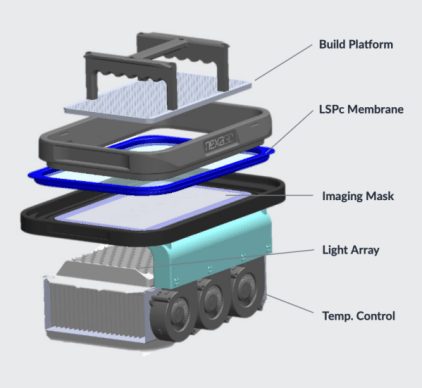
How it works
1. Design phase
The process begins with creating a 3D model using computer-aided design (CAD) software. This model is then converted into a file format suitable for 3D printing, usually STL or OBJ.
2. Slicing
The 3D model is sliced into thin horizontal layers using slicing software. The software also creates the support structures needed to stabilize the object during printing, especially for overhangs and complex geometries.
3. Printing
The cut file is uploaded to the resin 3D printer. The printer’s build platform sinks into the resin tank, just below the tank where the UV light source is placed. UV light selectively cures the resin layer by layer, solidifying the material into the desired shape. After each layer is cured, the build platform is raised slightly to allow the next layer to be cured.
4. Post processing
After printing, the object is removed from the build platform and usually needs to be rinsed in isopropyl alcohol (IPA) to remove any uncured resin. Further curing under UV light is often necessary to fully harden the material and enhance its mechanical properties. The support is then carefully removed, and the object can be sanded or otherwise finished as needed.
Applications of resin 3D printing
Resin 3D printing is used in a variety of industries because of its ability to produce high-quality, detailed parts. Common applications include:
Prototyping: Quickly create detailed prototypes for design verification and testing.
Dentistry: Creating accurate dental models, aligners, and prostheses.
Jewelery: Creating intricate jewelery designs and casting molds.
Miniatures and Sculptures: Production of detailed miniatures for hobbies and collections.
Medical Models: Creating accurate anatomical models for surgical planning and educational purposes.
Advantages over other 3D printing methods
Detail and Accuracy: Resin 3D printers offer higher detail and resolution than filament-based printers.
Smooth finish: Cured resin layers result in smooth surfaces, often requiring post-processing.
Material properties: Different resins can offer different properties, such as flexibility, stability, and biocompatibility, making them versatile for special applications.
Resin 3D Printing vs. Filament 3D Printing
Resin 3D printing and filament 3D printing are two popular additive manufacturing techniques, each with distinct processes, materials, and applications. Understanding their differences can help you choose the right technology for your specific needs.
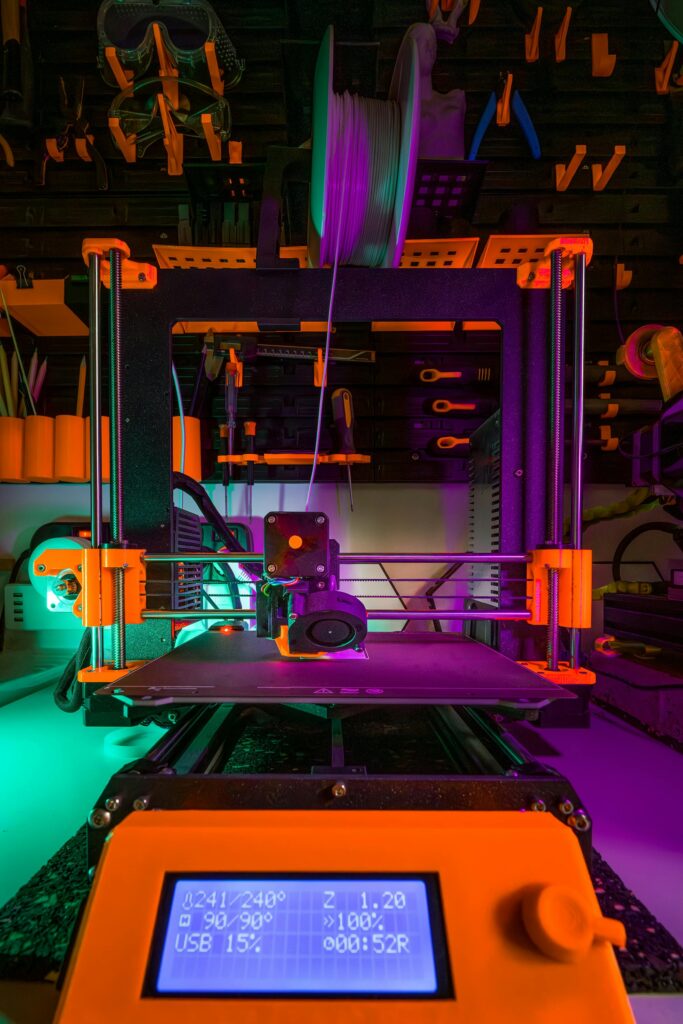
Materials
Resin 3D Printing:
- Photopolymer Resin: Resin 3D printers use liquid photopolymer resins that harden when exposed to ultraviolet (UV) light. These resins come in various types, including standard, tough, flexible, and biocompatible resins, each suited for different applications.
- Characteristics: Resins can be designed to have specific properties, such as high strength, flexibility, or transparency, allowing for a wide range of applications.
Filament 3D Printing:
- Thermoplastic Filaments: Filament 3D printers, also known as FDM (Fused Deposition Modeling) or FFF (Fused Filament Fabrication) printers, use spools of thermoplastic filaments such as PLA (Polylactic Acid), ABS (Acrylonitrile Butadiene Styrene), PETG (Polyethylene Terephthalate Glycol), and more.
- Characteristics: Filaments are chosen based on their mechanical properties, such as strength, flexibility, and heat resistance, and are available in a wide variety of colors and composite materials.
Process
Resin 3D Printing:
- Layer-by-Layer Curing: The process involves curing liquid resin layer by layer using a UV light source. The build platform starts at the bottom of the resin tank and moves up incrementally as each layer is cured.
- Steps:
- Design: Create a 3D model using CAD software and export it as an STL or OBJ file.
- Slicing: Use slicing software to convert the 3D model into thin layers and generate support structures if needed.
- Printing: The printer cures each layer of resin using UV light, building the object from the bottom up.
- Post-Processing: Clean the printed object in isopropyl alcohol (IPA) to remove uncured resin, cure it further under UV light, and remove support structures.
Filament 3D Printing:
- Layer-by-Layer Extrusion: This method involves melting and extruding thermoplastic filament through a heated nozzle, which deposits the material layer by layer to build the object.
- Steps:
- Design: Create a 3D model using CAD software and export it as an STL or OBJ file.
- Slicing: Use slicing software to convert the 3D model into thin layers and generate support structures if needed.
- Printing: The printer extrudes melted filament through a nozzle, depositing it layer by layer to build the object.
- Post-Processing: Remove support structures, and optionally, smooth the surface using sanding or chemical treatments.
Cost
Resin 3D Printing:
- Higher Material Costs: Resin can be more expensive than filament, and the need for additional post-processing materials like isopropyl alcohol and UV curing stations can add to the cost.
- Printer Costs: Resin printers often come at a higher initial cost compared to entry-level filament printers, though affordable options are available.
Filament 3D Printing:
- Lower Material Costs: Filament is generally cheaper and available in larger quantities, making it more cost-effective for large prints or multiple projects.
- Printer Costs: Filament printers, especially entry-level models, are often more affordable, making them accessible for hobbyists and small businesses.
Applications
Resin 3D Printing:
- High Precision and Detail: Resin printing excels in producing high-resolution objects with intricate details and smooth surface finishes, making it ideal for applications such as jewelry, dental models, miniatures, and detailed prototypes.
- Specific Use Cases: Commonly used in industries requiring fine detail and accuracy, such as dentistry, jewelry making, and custom art.
Filament 3D Printing:
- Functional Prototypes and Mechanical Parts: Filament printing is well-suited for creating functional prototypes, mechanical parts, and larger objects that do not require extremely fine details.
- Versatility: Widely used across various industries, including automotive, aerospace, and education, due to its versatility and ease of use.
Pros and Cons
Resin 3D Printing:
- Pros:
- High Resolution: Capable of producing highly detailed and smooth objects.
- Versatile Material Properties: Wide range of resins with different mechanical properties.
- Cons:
- Higher Costs: More expensive materials and post-processing requirements.
- Complex Post-Processing: Requires additional steps like rinsing, curing, and support removal.
- Safety Concerns: Resins can be toxic and require careful handling and proper ventilation.
Filament 3D Printing:
- Pros:
- Lower Costs: More affordable materials and printers.
- Ease of Use: Simpler process with less complex post-processing.
- Wide Material Availability: Broad range of filaments with varying properties.
- Cons:
- Lower Resolution: Visible layer lines and less detailed prints.
- Surface Finish: Often requires additional smoothing or finishing for a polished look.
Choosing between resin and filament 3D printing depends on your specific needs and priorities. Resin 3D printing is ideal for high-detail, precise, and smooth objects, while filament 3D printing is more cost-effective and versatile for larger and functional parts. By understanding the differences in materials, processes, costs, and applications, you can make an informed decision that best suits your projects and goals.
Resin 3D printing process
The resin 3D printing process involves several steps that must be followed carefully to ensure the best results.
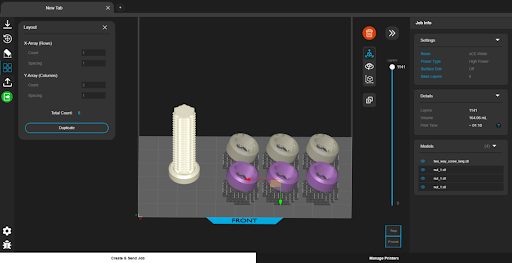
Preparation of design:
Create or obtain 3D models using CAD software.
Export the model to a compatible format, such as STL or OBJ.
Slicing:
Use slicing software to divide the 3D model into thin layers.
Adjust print settings such as layer height, exposure time, and support structures.
Printing:
Fill the resin tank with the appropriate photopolymer resin.
Begin the printing process, where the printer cures the resin layer by layer using UV light.
The build platform gradually pulls the object out of the resin tank as it is being printed.
Post processing:
- Remove the printed object from the build platform.
- Rinse the object in isopropyl alcohol (IPA) to remove uncured resin.
- Further cure the object using a UV curing station to increase strength and durability.
- Remove any supporting structures and sand the object if necessary for a smooth finish.
Important Considerations:
- Layer height: Thinner layers result in higher resolution but longer print times.
- Exposure Time: Adequate exposure is critical to layer adhesion and overall print quality.
- Support Structures: Essential for overhangs and complex geometries but requires careful removal after printing.
By understanding these aspects of resin 3D printing, users can produce high-quality prints with excellent detail and finish. The next sections will study the materials needed for successful resin 3D printing, types of printers, and safety notes.
Resin 3D Printing Materials & Components
Resin 3D printing relies on a combination of specialized materials and components to produce high-quality, detailed objects. Understanding these elements is crucial for achieving the best results.
Materials
- Standard Resin
- Description: The most common type of resin, suitable for general-purpose printing.
- Properties: Good balance of detail, strength, and surface finish.
- Applications: Prototyping, models, and everyday printing needs.
- Tough Resin
- Description: Designed to withstand higher stress and strain.
- Properties: Increased durability and impact resistance.
- Applications: Functional prototypes, mechanical parts, and tools.
- Flexible Resin
- Description: Provides elasticity and flexibility.
- Properties: Can bend and flex without breaking.
- Applications: Wearable items, gaskets, and flexible components.
- Castable Resin
- Description: Used for creating molds in investment casting.
- Properties: Burns out cleanly without residue.
- Applications: Jewelry, dental crowns, and small metal parts.
- Biocompatible Resin
- Description: Safe for use in medical applications.
- Properties: Meets medical-grade standards for safety and non-toxicity.
- Applications: Dental aligners, surgical guides, and medical models.
- High-Temperature Resin
- Description: Withstands high temperatures without deforming.
- Properties: High heat resistance and stability.
- Applications: Engine components, mold inserts, and heat-resistant parts.
Components
- Resin Tank
- Function: Holds the liquid resin during the printing process.
- Maintenance: Needs regular cleaning and occasional replacement to ensure print quality.
- Build Platform
- Function: Supports the printed object as it is built layer by layer.
- Adjustment: Must be properly leveled to ensure accurate prints.
- UV Light Source
- Function: Cures the resin by emitting ultraviolet light.
- Types: Can be a laser (SLA), projector (DLP), or LCD screen (MSLA).
- Vat Film/FEP Sheet
- Function: A transparent film at the bottom of the resin tank that allows UV light to pass through and cure the resin.
- Maintenance: Should be replaced periodically to prevent print failures and ensure clarity.
- Control Software
- Function: Manages the printing process, slicing models, and adjusting print settings.
- Features: Offers options for layer thickness, exposure time, and support generation.
Resin 3D Printer Types
Resin 3D printers come in various types, each utilizing a different method to cure the resin. The three main types are SLA, DLP, and MSLA.
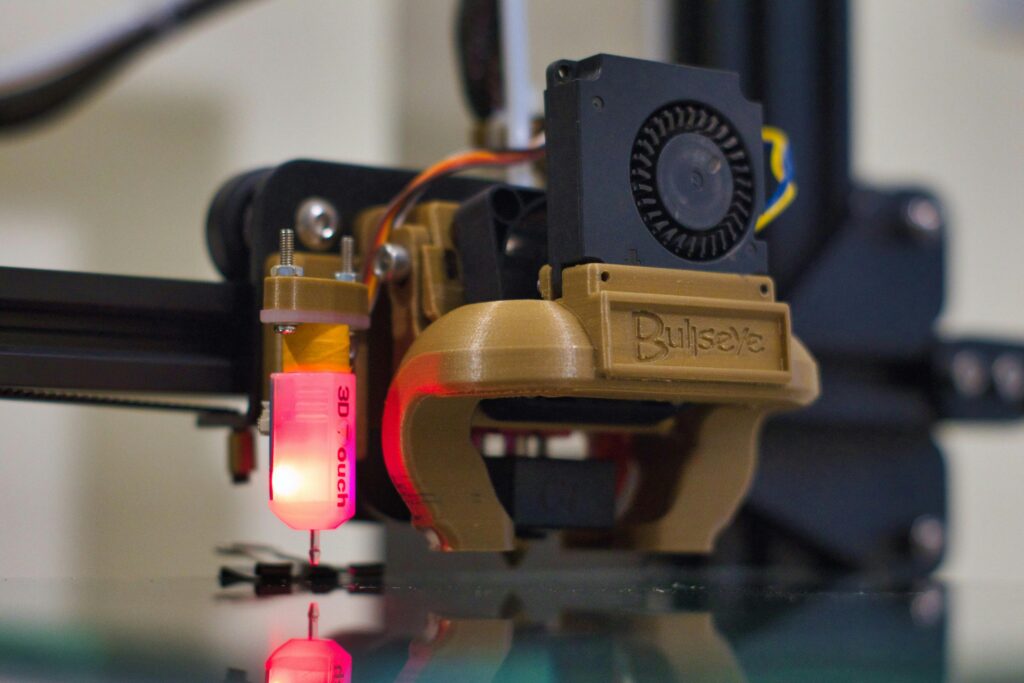
SLA (Stereolithography)
- Mechanism: Uses a laser to draw each layer of the object, curing the resin selectively.
- Precision: High precision and smooth surface finish.
- Applications: Ideal for detailed models and complex geometries.
- Example: Formlabs Form 3.
DLP (Digital Light Processing)
- Mechanism: Uses a digital projector screen to flash each layer onto the resin, curing it all at once.
- Speed: Generally faster than SLA due to layer-wide curing.
- Resolution: Depends on the projector’s resolution; finer details can be achieved with higher resolution projectors.
- Applications: Suitable for dental models, jewelry, and rapid prototyping.
- Example: Anycubic Photon.
MSLA (Masked Stereolithography)
- Mechanism: Utilizes an LCD screen to mask UV light, curing an entire layer simultaneously.
- Cost: Often more affordable due to cheaper components.
- Resolution: Determined by the LCD screen’s resolution; typically offers a good balance of speed and detail.
- Applications: Versatile for various detailed prints and prototypes.
- Example: Elegoo Mars.
Resin 3D Printing Safety Notes
Handling resin and operating a resin 3D printer involves certain risks. Following safety guidelines is essential to protect yourself and ensure a safe printing environment.
Handling Resin
- Protective Gear: Always wear nitrile gloves and safety goggles when handling resin to prevent skin and eye contact.
- Ventilation: Work in a well-ventilated area to avoid inhaling fumes. Consider using a fume hood or air purifier.
- Spills and Disposal: Clean up spills immediately with paper towels and isopropyl alcohol. Dispose of resin waste according to local regulations.
During Printing
- UV Light Exposure: Avoid looking directly at the UV light source. Ensure the printer’s cover is in place during operation.
- Temperature Control: Maintain a stable room temperature to ensure optimal resin performance and prevent overheating.
Post-Processing
- Isopropyl Alcohol (IPA): Use IPA for cleaning printed objects, but handle it with care due to its flammability and potential skin irritation.
- Curing Station: Use a UV curing station to fully harden prints. Ensure the station is properly shielded to prevent UV exposure.
Use the Best Resin 3D Printer
Selecting the best resin 3D printer depends on your specific needs, budget, and intended applications. Here are key factors to consider:
Criteria for Selection
- Print Quality
- Resolution: Look for printers with high resolution to achieve detailed prints.
- Surface Finish: Choose printers known for smooth surface finishes with minimal layer lines.
- Build Volume
- Size Requirements: Ensure the printer’s build volume meets your size requirements for typical projects.
- Versatility: Larger build volumes offer more flexibility for various projects.
- Speed
- Layer Curing Time: Faster curing times can significantly reduce overall print times.
- Layer Thickness: Thinner layers provide better detail but take longer to print.
- Ease of Use
- Software: User-friendly slicing and control software can streamline the printing process.
- Maintenance: Consider printers with easy maintenance features, such as removable resin tanks and straightforward calibration.
- Cost
- Initial Investment: Balance between upfront cost and long-term value. Higher-priced printers often offer better features and reliability.
- Operational Costs: Factor in the cost of resin, replacement parts, and post-processing materials.
Best Recommendations
- Formlabs Form 3
- Type: SLA
- Features: High resolution, excellent surface finish, reliable performance.
- Applications: Professional prototyping, dental models, jewelry.
- Anycubic Photon Mono X
- Type: MSLA
- Features: Large build volume, high-resolution LCD screen, affordable price.
- Applications: Versatile for various detailed prints, suitable for hobbyists and small businesses.
- Elegoo Mars 3
- Type: MSLA
- Features: High precision, user-friendly interface, compact design.
- Applications: Detailed miniatures, small prototypes, educational use.
By carefully evaluating your needs and considering these factors, you can select the best resin 3D printer that meets your requirements and enhances your printing capabilities.
FAQ
What is resin 3D printing?
Resin 3D printing uses liquid photopolymer resin and UV light to create detailed, high-resolution objects layer by layer.
How does resin 3D printing differ from filament 3D printing?
Resin printing uses liquid resin and UV curing, while filament printing uses melted plastic filament extruded through a nozzle. Resin printing offers higher detail and smoother finishes.
What are the main types of resin 3D printers?
SLA (Stereolithography), DLP (Digital Light Processing), and MSLA (Masked Stereolithography).
What materials are used in resin 3D printing?
Common resins include standard, tough, flexible, castable, biocompatible, and high-temperature resins.
Is resin 3D printing safe?
Yes, but it requires precautions. Wear protective gear, ensure good ventilation, and handle resins carefully to avoid skin and eye contact.
What are the advantages of resin 3D printing?
High resolution, smooth surface finishes, and the ability to print intricate details.
What are common applications of resin 3D printing?
Jewelry, dental models, miniatures, detailed prototypes, and medical models.

